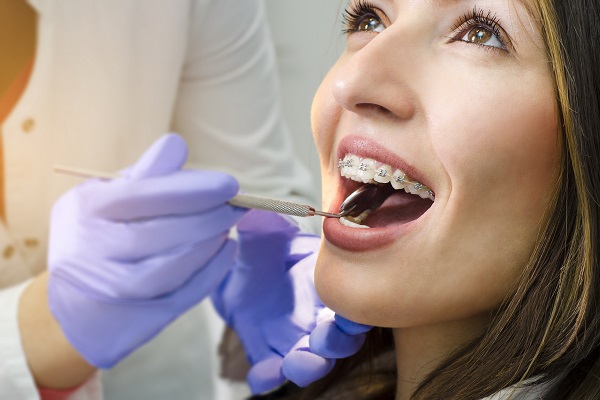What To Expect at a Braces Consultation

Getting braces which can also be referred to as orthodontic cases, is a major milestone in your journey to a healthier, straighter smile. But before you can begin the process of orthodontic treatment, you need to attend a braces consultation. The consultation is an important step in the process as it allows you to discuss your dental needs with a qualified orthodontic specialist. In this blog post, we will discuss what you can expect at a consultation and why it is important.
A thorough examination of your teeth
During a braces consultation, one of the most important steps is a thorough examination of your teeth. This examination is critical for your orthodontist to determine what type of orthodontic cases will work best for your individual case.
The orthodontist will begin by taking a detailed look at your teeth, gums, and jawline. This might include taking X-rays, photographs, and impressions of your teeth. These diagnostic tools help the orthodontist evaluate the overall structure and alignment of your teeth and jaw.
Next, the orthodontist will look for any potential issues or problems that could impact your orthodontic treatment. For example, they might check for tooth decay, gum disease, or missing teeth. They will also look for bite problems such as overbites, underbites, and crossbites.
Based on this examination, the orthodontist will be able to make an informed recommendation for your orthodontic treatment. They will discuss the treatment options available to you and the best approach to achieve your desired results.
It is important to note that the examination process may take some time, so be prepared to spend a little longer at your consultation appointment. But, this examination is crucial in creating a personalized treatment plan for you and setting you on the path to a healthier, more confident smile.
A discussion of your treatment options
During your orthodontic cases consultation, your orthodontist will discuss your treatment options based on the examination of your teeth. They will consider the severity of your dental issue, your age, and your personal preferences to determine the most appropriate course of treatment. Here are the different types of orthodontic cases your orthodontist might discuss:
Traditional metal
This is the most common type of orthodontic case, consisting of metal brackets attached to the teeth and a wire running through them. These orthodontic cases are effective for treating all kinds of dental problems.
Ceramic
Ceramic orthodontic cases are similar to traditional metal orthodontic cases but are made of tooth-colored or clear materials, making them less noticeable. However, they are more brittle than metal orthodontic cases and may require more careful maintenance.
Lingual
Lingual orthodontic cases are similar to traditional metal orthodontic cases, but the brackets and wires are attached to the back side of your teeth, making them virtually invisible from the outside.
Invisalign
This treatment option involves a series of clear plastic aligners that are custom-made to fit over your teeth. These aligners are changed every few weeks to gradually move your teeth into the desired position. Invisalign is a great option for people who want a more discreet and flexible treatment.
Your orthodontist will go over the benefits and drawbacks of each option and help you decide which one is right for you. They will also discuss the timeline of your treatment, the frequency of appointments, and the cost of orthodontic cases. By the end of your consultation, you will have a clear understanding of what to expect during your orthodontic case treatment.
An explanation of the process
After discussing your treatment options and selecting orthodontic cases as the best solution, you will want to know what to expect during the process itself. Once your orthodontist applies the orthodontic cases, you will begin visiting the office every few weeks for adjustments.
During these visits, your orthodontist will check the progress of your teeth' movement and make any necessary adjustments to your orthodontic cases. This may involve tightening or loosening the wires, replacing elastic bands, or making other modifications to help ensure your teeth are moving in the desired direction.
It is essential to take good care of your orthodontic cases to avoid complications during treatment. This includes following your orthodontist's instructions regarding food restrictions, cleaning your teeth and orthodontic cases regularly, and avoiding damaging habits such as nail-biting or using your teeth to open packages.
Call your dentist today
Overall, while the orthodontic cases process can be a bit uncomfortable at times, it is an effective and well-established method for correcting misaligned teeth and achieving a beautiful, healthy smile. By understanding the process and following your orthodontist's guidance, you can feel confident in your treatment and look forward to seeing the results.
Request an appointment here: https://www.brooklyn-orthodontist.com or call Brooklyn Heights Orthodontics: Susan Liebman, DMD at (718) 416-6368 for an appointment in our Brooklyn office.
Check out what others are saying about our dental services on Yelp: Braces in Brooklyn, NY.
Recent Posts
Searching for braces near me is often the first step toward achieving a healthier, more aligned smile. Braces can help correct a range of dental issues, including crooked teeth, bite problems, and jaw misalignment. Although treatment is typically performed by an orthodontist, general dentists play a crucial role in preparing patients for the process and…
Orthodontics can fix almost all teeth alignment issues. Poorly aligned teeth can ruin the way that your smile looks, and they can also leave you more vulnerable to a variety of oral issues, like tooth decay and gum disease, because it is harder to remove plaque from teeth surfaces. Improperly aligned teeth can also make…
Orthodontics help straighten improperly aligned teeth. Teeth alignment problems can ruin the appearance of your smile and leave your teeth more vulnerable to issues like tooth decay and gum disease.Orthodontics uses devices like braces and clear aligners to improve the alignment of teeth by gradually pushing them to better positions over time. Common teeth alignment…
Oral hygiene is vital when you are straightening your teeth with orthodontics. Oral appliances used to straighten teeth like braces and clear aligners can get in the way of oral hygiene. These appliances, braces in particular, can also increase your risk of oral issues like tooth decay.The oral appliances used to straighten teeth can increase…


